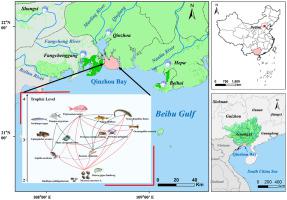Journal of Hazardous Materials ( IF 12.2 ) Pub Date : 2020-11-27 , DOI: 10.1016/j.jhazmat.2020.124681 Di Du , Yonglong Lu , Yunqiao Zhou , Qifeng Li , Meng Zhang , Guoxiang Han , Haotian Cui , Erik Jeppesen

|
Knowledge about bioaccumulation and trophic transfer in food webs is of tremendous importance in contaminant hazards evaluation. Perfluoroalkyl acids (PFAAs) are widely distributed, and its emissions to coastal areas have posed a threat to the health of marine organisms and consumers. In this study, 15 species were sampled from Qinzhou Bay of the South China Sea. The concentrations of PFAAs in organisms were detected by liquid chromatography-mass spectrometry, and the trophic positions of organisms were constructed based on nitrogen isotope analysis. PFAAs were found in all organisms. The contents of PFOS in all organisms were higher than of PFOA, and the proportions of short-chain PFAAs were higher in the low trophic positioned organisms, while long-chain PFAAs were higher in the high trophic positioned organisms. Moreover, the bioaccumulation factors (BAFs) increased with the increasing number of fluorocarbon atoms. The trophic magnification factor (TMF) and the biomagnification factors (BMFs), calculated from the constructed food webs, together suggested potential biomagnification effects of PFOS, while less clear results were found for PFOA. Our results further indicate that previously banned long-chain PFAAs had persistent residuals in this coastal marine ecosystem, and that emerging short-chain PFAAs had high concentrations in some species but showed no biomagnification.











































 京公网安备 11010802027423号
京公网安备 11010802027423号